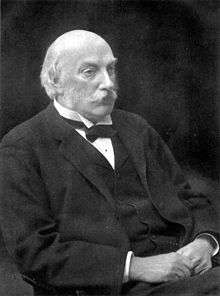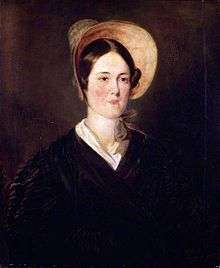1842
| Millennium: | 2nd millennium |
|---|---|
| Centuries: | |
| Decades: | |
| Years: |
| 1842 in topic |
|---|
| Humanities |
|
Archaeology – Architecture – Art Literature – Music |
| By country |
| Australia – Belgium – Brazil – Canada – Denmark – France – Germany – Mexico – New Zealand – Norway – Philippines – Portugal – Russia – South Africa – Spain – Sweden – United Kingdom – United States – Venezuela |
| Other topics |
| Rail transport – Science – Sports |
| Lists of leaders |
| Sovereign states – State leaders – Territorial governors – Religious leaders |
| Birth and death categories |
| Births – Deaths |
| Establishments and disestablishments categories |
| Establishments – Disestablishments |
| Works category |
| Works |
| Gregorian calendar | 1842 MDCCCXLII |
| Ab urbe condita | 2595 |
| Armenian calendar | 1291 ԹՎ ՌՄՂԱ |
| Assyrian calendar | 6592 |
| Balinese saka calendar | 1763–1764 |
| Bengali calendar | 1249 |
| Berber calendar | 2792 |
| British Regnal year | 5 Vict. 1 – 6 Vict. 1 |
| Buddhist calendar | 2386 |
| Burmese calendar | 1204 |
| Byzantine calendar | 7350–7351 |
| Chinese calendar | 辛丑年 (Metal Ox) 4538 or 4478 — to — 壬寅年 (Water Tiger) 4539 or 4479 |
| Coptic calendar | 1558–1559 |
| Discordian calendar | 3008 |
| Ethiopian calendar | 1834–1835 |
| Hebrew calendar | 5602–5603 |
| Hindu calendars | |
| - Vikram Samvat | 1898–1899 |
| - Shaka Samvat | 1763–1764 |
| - Kali Yuga | 4942–4943 |
| Holocene calendar | 11842 |
| Igbo calendar | 842–843 |
| Iranian calendar | 1220–1221 |
| Islamic calendar | 1257–1258 |
| Japanese calendar | Tenpō 13 (天保13年) |
| Javanese calendar | 1769–1770 |
| Julian calendar | Gregorian minus 12 days |
| Korean calendar | 4175 |
| Minguo calendar | 70 before ROC 民前70年 |
| Nanakshahi calendar | 374 |
| Thai solar calendar | 2384–2385 |
| Tibetan calendar | 阴金牛年 (female Iron-Ox) 1968 or 1587 or 815 — to — 阳水虎年 (male Water-Tiger) 1969 or 1588 or 816 |
| Wikimedia Commons has media related to 1842. |
1842 (MDCCCXLII) was a common year starting on Saturday of the Gregorian calendar and a common year starting on Thursday of the Julian calendar, the 1842nd year of the Common Era (CE) and Anno Domini (AD) designations, the 842nd year of the 2nd millennium, the 42nd year of the 19th century, and the 3rd year of the 1840s decade. As of the start of 1842, the Gregorian calendar was 12 days ahead of the Julian calendar, which remained in localized use until 1923.
Events
January–March
- January
- Michael Alexander takes office, as the first appointee to the Anglican-German Bishopric in Jerusalem.
- American medical student William E. Clarke of Berkshire Medical College becomes the first person to administer an inhaled anesthetic, to facilitate a surgical procedure (dental extraction).[1]
- January 6–13 – First Anglo-Afghan War – Massacre of Elphinstone's army (Battle of Gandamak): British East India Company troops are destroyed by Afghan forces on the road from Kabul to Jalalabad, Afghanistan, by Akbar Khan, son of Dost Mohammad Khan.
- January 8 – Delft University of Technology is established by William II of the Netherlands, as a 'Royal Academy for the education of civilian engineers'.[2]
- January 23 – Antarctic explorer James Clark Ross, charting the eastern side of James Ross Island, reaches a Farthest South of 78°09'30"S.[3]
- February 1 – Willamette University is established in Salem, Oregon.
- February 7 – Battle of Debre Tabor: Ras Ali Alula, Regent of the Emperor of Ethiopia, defeats warlord Wube Haile Maryam of Semien.
- March – Commonwealth v. Hunt: the Massachusetts Supreme Court makes strikes and unions legal in the United States.
- March 2 – Gaylad, ridden by Tom Olliver, wins the Grand National at Aintree Racecourse in England.
- March 5 – Mexican troops led by Ráfael Vásquez invade Texas, briefly occupy San Antonio, and then head back to the Rio Grande. This is the first such invasion since the Texas Revolution.
- March 9 – Giuseppe Verdi's third opera Nabucco premieres at La Scala in Milan; its success establishes Verdi as one of Italy's foremost operatic composers.
- March 17 – The Relief Society, a philanthropic and educational women's organization of The Church of Jesus Christ of Latter-day Saints (LDS Church) is founded.
- March 28 – The Vienna Philharmonic Orchestra, founded by Otto Nicolai, performs its first concert.[4]
- March 30 – American physician and pharmacist Crawford Long administers an inhaled anesthetic (diethyl ether) to facilitate a surgical procedure (removal of a neck tumor).[5][6]
- March 31 – The Middleton Junction and Oldham Branch Railway line is opened up to Werneth in North West England.
April–June
- April 13 – First Anglo-Afghan War – Battle of Jellalabad: British troops are victorious.
- May 8 – Versailles rail accident: A train traveling between Versailles and Paris, France derails, due to a broken locomotive axle, and catches fire, killing at least 55 passengers in the locked carriages.
- May 11 – The Income Tax Act establishes the first peacetime income tax in the United Kingdom; 7 pence in the pound, for incomes over 150 pounds.[7]
- May 19 – Dorr Rebellion: Militiamen supporting Thomas Wilson Dorr attack the arsenal in Providence, Rhode Island, but are repulsed.
- June 4 – In South Africa, hunter Dick King rides into a British military base in Grahamstown, to warn that the Boers have besieged Durban (he had left 11 days earlier). The British army dispatches a relief force.
- June 13 – Queen Victoria becomes the first reigning British monarch to travel by train, on the Great Western Railway between Slough and London Paddington station.[8]
- June 18 – A primary school system is established in Sweden.[9]
- June – James Nasmyth patents the steam hammer in the United Kingdom.[10]
July–September
- July 8 – A total solar eclipse occurs in Asia.
- July 13 – The Tri-Kap fraternity is founded at Dartmouth College (the oldest local fraternity in the United States).
- August 4 – The Armed Occupation Act is signed, providing for the armed occupation and settlement of the unsettled part, of the Peninsula of East Florida.
- August 9 – The Webster–Ashburton Treaty is signed, establishing the United States–Canada border east of the Rocky Mountains.
- August 10 – The Mines Act 1842 becomes law, prohibiting underground work for all women and boys under 10 years old in the United Kingdom.
- August 14 – American Indian Wars: United States general William J. Worth declares the Second Seminole War to be over.
- August 29 – The Treaty of Nanking, an unequal treaty between Britain and Qing dynasty China, ends the First Opium War, and establishes Hong Kong as a British colony until 1997.
- September – Wesleyan University is established in Ohio.
- September 16–17 – The Treaty of Chushul ends the Sino-Sikh War.
October–December
- October 5 – Josef Groll brews the first pilsner beer in the city of Pilsen, Bohemia (now the Czech Republic).
- October 29 – The Iberian Peninsula is struck by a category 2 hurricane.
- November 26 – The University of Notre Dame in South Bend, Indiana (United States) is established by Father Edward Sorin, of the Roman Catholic Congregation of Holy Cross.
- December 7 – The New York Philharmonic, founded by Ureli Corelli Hill, performs its first concert.[11]
- December 20 – The Citadel, The Military College of South Carolina, is established.
Date unknown
- The Polynesian islands of Tahiti and Tahuata are declared a protectorate of France.
- The New Zealand seat of government moves from Russell to Auckland.
- Dzogchen Monastery, in Sichuan, China, is almost completely destroyed by an earthquake.
- English palaeontologist Richard Owen coins the name Dinosauria, hence the Anglicized dinosaur.[12]
- Julius von Mayer proposes that work and heat are equivalent.[13]
- Pentonville Prison in London begins to function.
- The Sons of Temperance is founded in New York City.
- Founding of:
- Cumberland University (in Lebanon, Tennessee).
- Hollins University (in Roanoke, Virginia by Charles Cocke).
- Villanova University (in Villanova, Pennsylvania by the Augustinian order).
- Indiana University Maurer School of Law at Indiana University Bloomington.
Births
January–June
- January 11 – William James, American psychologist, philosopher (d. 1910)
- January 15 – Mary MacKillop, first Australian saint (d. 1909)
- February 3 – Sidney Lanier, American writer (d. 1881)
- February 7 – Alexandre Ribot, Prime Minister of France (d. 1923)
- February 11 – Erik Gustaf Boström, 2-Time Prime Minister of Sweden (d. 1907)
- February 23 – Carl Theodore Liebermann, German chemist (d. 1914)
- February 4 – Arrigo Boito, Italian poet, composer (d. 1918)
- February 23 – Karl Robert Eduard von Hartmann, German philosopher (d. 1906)
- February 25 – Karl May, German writer (d. 1912)
- March 2 – Carl Jacobsen, Danish brewer, patron of the arts after whom the Carlsberg brewery was named (d. 1914)
- March 10 – Mykola Lysenko, Ukrainian composer (d. 1912)
- March 18 – Stéphane Mallarmé, French poet (d. 1898)
- March 26 – Alexandre Saint-Yves d'Alveydre, French occultist (d. 1909)
- March 30 – John Fiske, American philosopher (d. 1901)
- April 2 – Dominic Savio, Italian adolescent student of John Bosco (d. 1857)
- April 17 – Maurice Rouvier, Prime Minister of France (d. 1911)
- May 7 – Isala Van Diest, Belgian physician (d. 1916)
- May 8 – Emil Christian Hansen, Danish fermentation physiologist (d. 1909)
- May 13 – Arthur Sullivan, English composer (d. 1900)
- June 11 – Carl von Linde, German scientist, engineer (d. 1934)
- June 12 – Rikard Nordraak, Norwegian composer (d. 1866)
- June 16 – David Herold, accomplice of John Wilkes Booth (d. 1865)
- June 24 – Ambrose Bierce, American writer, satirist (d. ca. 1914)
- June 25 – Eloy Alfaro Delgado Gabriel, President of Ecuador (d. 1912)
July–December
- July 2 – Albert Ladenburg, German chemist (d. 1911)
- July 4 – Hermann Cohen, German-Jewish philosopher (d. 1918)
- July 14 – Christian Lundeberg, 10th Prime Minister of Sweden (d. 1911)
- July 30 – Thomas J. O'Brien, American politician, diplomat (d. 1933)
- August 23 – Osborne Reynolds, Irish engineer, physicist (d. 1912)
- September 3 – John Devoy, Irish rebel leader, exile (d. 1928)
- September 13 – John H. Bankhead, U.S. Senator (d. 1920)
- September 17 – Sofia Hagman, Finnish educator pioneer (d. 1900)
- September 20 – James Dewar, Scottish chemist, physicist (d. 1923)
- September 22
- Abdul Hamid II, Ottoman Sultan (d. 1918)
- Jakob Stilling, German ophthalmologist (d. 1915)
- October 3 – Frederick Rodgers, American admiral (d. 1917)
- October 14 – Joe Start, American baseball player (d. 1927)
- October 17 – Gustaf Retzius, Swedish physician, anatomist (d. 1919)
- October 27 – Giovanni Giolitti, 5-time Prime Minister of Italy (d. 1928)
- October 28 – Anna Elizabeth Dickinson, American orator (d. 1932)
- November 12
- Ōyama Iwao, Japanese field marshal, a founder of the Imperial Japanese Army (d. 1916)
- John Strutt, 3rd Baron Rayleigh, English physicist, Nobel Prize laureate (d. 1919)
- November 26 – Madeleine Brès, French medical (d. 1921)
- December 2 – C. W. Alcock, English footballer, football official (d. 1907)
- December 3 – Ellen Swallow Richards, American chemist (d. 1911)
- December 9 – Peter Kropotkin, Russian anarchist (d. 1921)
- December 12
- Adolf Bötticher, German art historian (d. 1901)
- Alfred Parland, Russian architect (d. 1919)
Deaths
January–June
- January 12 – Johanna Stegen, German heroine (b. 1793)
- February 15 – Carlo Andrea Pozzo di Borgo, Corsican politician, Russian diplomat (b. 1764)
- March 4 – James Forten, African American abolitionist
- March 6 – Constanze Mozart, German-born wife of Wolfgang Amadeus Mozart (b.1762)
- March 13
- Samuel Eells, American founder of Alpha Delta Phi fraternity (b. 1810)
- Henry Shrapnel, English army officer, inventor (b. 1761)
- March 15 – Luigi Cherubini, Italian composer (b. 1760)
- March 23 – Stendhal, French novelist (b. 1783)
- May 8 – Jules Dumont d'Urville, French explorer (b. 1790)
- May 12 – Walenty Wańkowicz, Polish painter (b. 1799)
- June 9 – Maria Dalle Donne, Bolognese physician (b. 1778)
- June 18 – François-André Baudin, French admiral (b. 1774)
July–December
- July 13 – Prince Ferdinand Philippe, Duke of Orléans, French prince (b. 1810)
- July 21 – Laura M. Hawley Thurston, American poet and educator (b. 1812)
- July 25 – Dominique Jean Larrey, French surgeon (b. 1766)
- July 28 – Clemens Brentano, German poet (b. 1778)
- September 10
- William Hobson, Irish-born officer in the British Royal Navy, first Governor-General of New Zealand and co-author of Treaty of Waitangi (b. 1792)
- Letitia Christian Tyler, First Lady of the United States (b. 1790)
- September 15 – Francisco Morazán, Honduran-born politician, President of Federal Republic of Central America (b. 1792)
- October 2 – William Ellery Channing, American Unitarian theologian, minister (b. 1780)
- October 20 – Grace Darling, English heroine (b. 1815)
- October 24 – Bernardo O'Higgins, first Chilean head of state after independence (b.1778)
- December 1 – Philip Spencer, American founder of Chi Psi Fraternity, midshipman aboard the USS Somers
- December 12 – Robert Haldane, British theologian (b. 1764)
- December 24 – Adam Gillies, Lord Gillies, Scottish judge (b. 1760)
Date Unknown
References
- ↑ Lyman, H. M. (1881). "History of anaesthesia". Artificial anaesthesia and anaesthetics. New York: William Wood and Company. p. 6.
- ↑ "History of the university". TU Delft. Archived from the original on February 28, 2008. Retrieved 2012-07-10.
- ↑ Coleman, E. C. (2006). The Royal Navy in Polar Exploration, from Frobisher to Ross. Stroud: Tempus Publishing. p. 335. ISBN 0-7524-3660-0.
- ↑ "The History of the Vienna Philharmonic". Vienna Philharmonic.
- ↑ Long, C. W. (1849). "An account of the first use of Sulphuric Ether by Inhalation as an Anæsthetic in Surgical Operations". Southern Medical and Surgical Journal. 5: 705–13. Retrieved 2012-06-12.
- ↑ Long, Tony (2007-03-30). "March 30, 1842: It's Lights Out, Thanks to Ether". Wired. Retrieved 2007-12-29.
- ↑ Palmer, Alan; Veronica (1992). The Chronology of British History. London: Century Ltd. pp. 264–266. ISBN 0-7126-5616-2.
- ↑ Green, Oliver (2011). Discovering London Railway Stations. Shire Publications. ISBN 978-0-7478-0806-0.
- ↑ Hans Högman. "Några årtal i skolans historia" (in Swedish). Göteborg town museum. Retrieved 2 July 2016.
- ↑ Smiles, Samuel (1912). James Nasmyth Engineer: an Autobiography. John Murray. Retrieved 2009-11-14.
- ↑ "Ureli Corelli Hill". New York Philharmonic.
- ↑ Owen, R. (1842). "Report on British Fossil Reptiles." Part II. Report of the British Association for the Advancement of Science, Plymouth, England.
- ↑ von Mayer, J. R. (1842). "Bemerkungen über die Kräfte der unbelebten Nature ("Remarks on the forces of inorganic nature")". Annalen der Chemie und Pharmacie. 43: 233–40. doi:10.1002/jlac.18420420212. Retrieved 2012-01-27.
This article is issued from
Wikipedia.
The text is licensed under Creative Commons - Attribution - Sharealike.
Additional terms may apply for the media files.
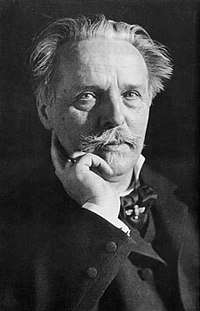
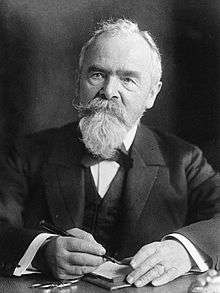
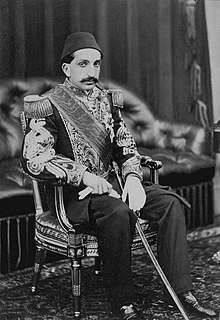
.jpg)
